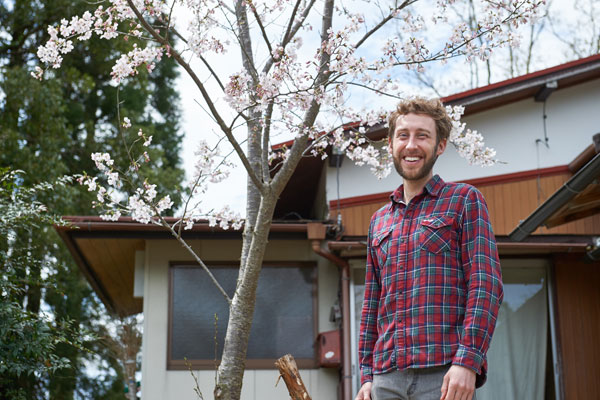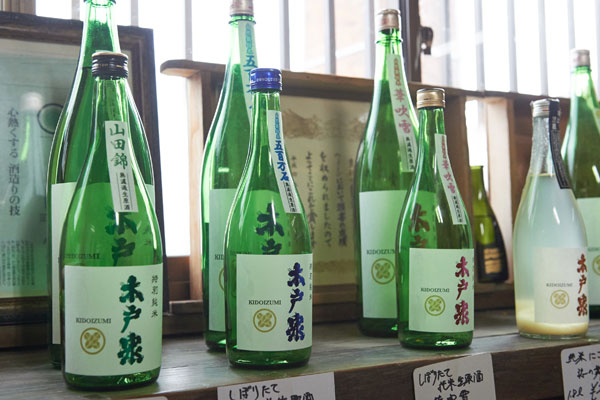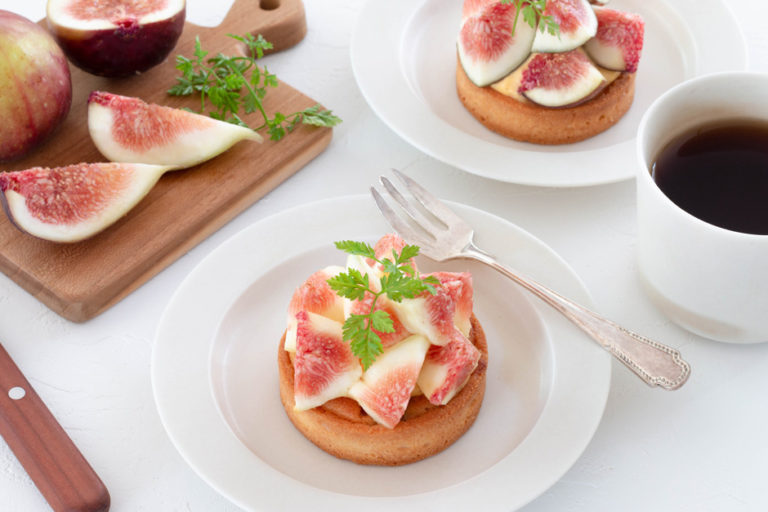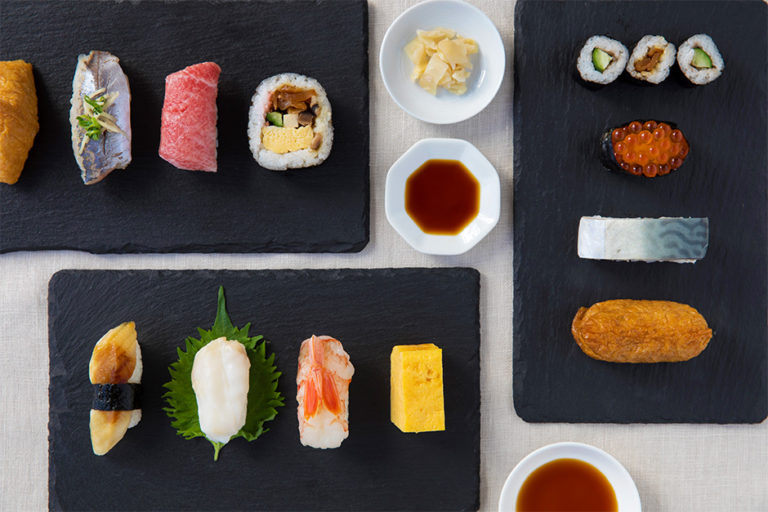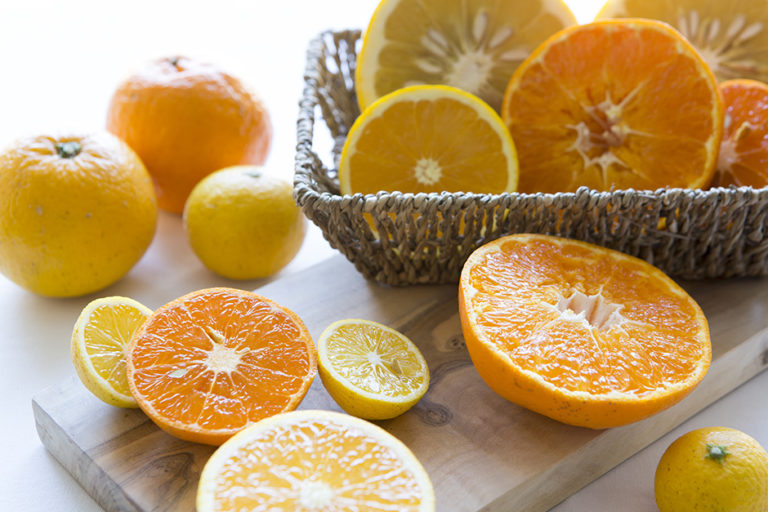SHUN CURATORS (June 2016)
Spreading the Joy of Koji and Fermented Foods
― International Business Director and Sake Master Justin Potts
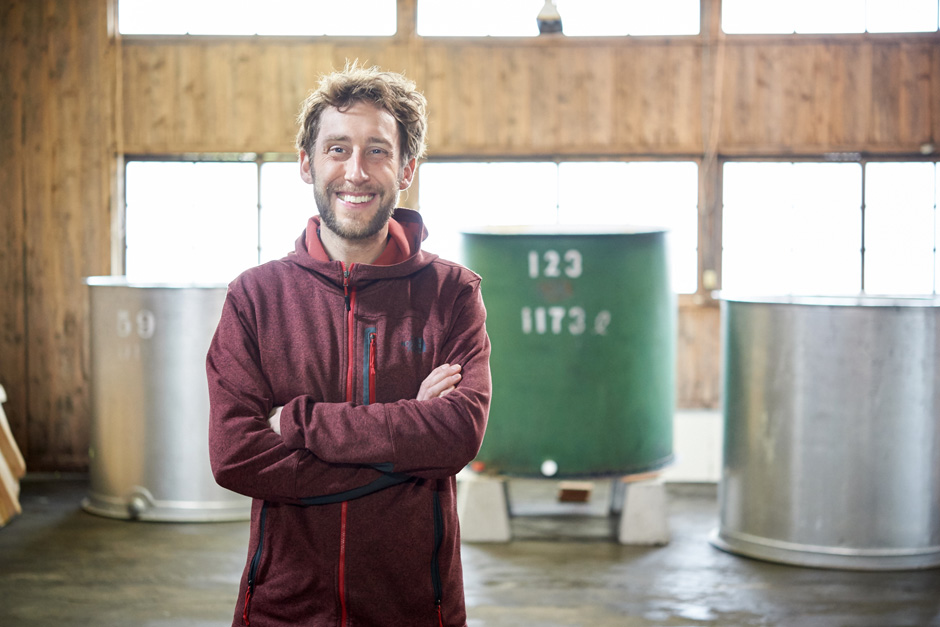
An accredited sake master, Potts moved to the city of Isumi in Chiba prefecture in January 2016 where he is intimately involved in the operations of the venerated Kidoizumi brewery. Potts says that the experience of being part of the fermentation process prompted him to change his diet completely.
Adopting an authentic Japanese lifestyle
What was it that initially sparked your interest in Japan?
I’ve always been a curious and inquisitive type. I spent three months studying in Osaka prior to graduating from university. A friend who I met there suggested that I spend a year in Japan working as an English teacher, so that’s why I came back the second time.
There were lots of other foreigners where I was living. Most of them were here for work, either as English teachers or in the financial sector. And it struck me that very few of them seemed to be interested in the sort of unique experiences that can be had only in Japan.
The third time I came to Japan I had a working visa and I was doing jobs such as editor and PR advisor. That’s when I met my wife and got my first taste of home-style Japanese cuisine from eating together with her family.
Up until then, all I knew about Japanese food was things like udon, sushi and katsudon. At my wife’s place I was introduced to culinary delights such as shisomaki (miso paste wrapped in beefsteak leaf). It was completely new to me; I had no idea that Japanese cooking extended to flavors such as this. Little by little I began discovering new types of food, as well as the fundamental idea of a meal as a bowl of rice surrounded by lots of little dishes, and much more about the Japanese way of life. When I was in Japan the second time, I had been very keen to experience the unique aspects of life in Japan?and now I was able to do just that.
In my younger days I wasn’t particularly healthy, and I was always thinking I should do something about it. But it wasn’t until I came to Japan that I actually started to feel healthy, even though I hadn’t made any major changes to my lifestyle.
When I first came to Japan, I was a student and I wasn’t too fussed about what I ate because I didn’t have much money. Even so, I noticed that I felt much better in Japan. And I wondered why that was so. When I thought about it, I had a truly terrible diet during my teenage years back in America. I’d have cereal and donuts for breakfast, and hamburgers or pizza for dinner. Up until the age of 20 I made no effort whatsoever to eat vegetables; my diet was almost exclusively meat.
There were lots of other foreigners where I was living. Most of them were here for work, either as English teachers or in the financial sector. And it struck me that very few of them seemed to be interested in the sort of unique experiences that can be had only in Japan.
The third time I came to Japan I had a working visa and I was doing jobs such as editor and PR advisor. That’s when I met my wife and got my first taste of home-style Japanese cuisine from eating together with her family.
Up until then, all I knew about Japanese food was things like udon, sushi and katsudon. At my wife’s place I was introduced to culinary delights such as shisomaki (miso paste wrapped in beefsteak leaf). It was completely new to me; I had no idea that Japanese cooking extended to flavors such as this. Little by little I began discovering new types of food, as well as the fundamental idea of a meal as a bowl of rice surrounded by lots of little dishes, and much more about the Japanese way of life. When I was in Japan the second time, I had been very keen to experience the unique aspects of life in Japan?and now I was able to do just that.
In my younger days I wasn’t particularly healthy, and I was always thinking I should do something about it. But it wasn’t until I came to Japan that I actually started to feel healthy, even though I hadn’t made any major changes to my lifestyle.
When I first came to Japan, I was a student and I wasn’t too fussed about what I ate because I didn’t have much money. Even so, I noticed that I felt much better in Japan. And I wondered why that was so. When I thought about it, I had a truly terrible diet during my teenage years back in America. I’d have cereal and donuts for breakfast, and hamburgers or pizza for dinner. Up until the age of 20 I made no effort whatsoever to eat vegetables; my diet was almost exclusively meat.
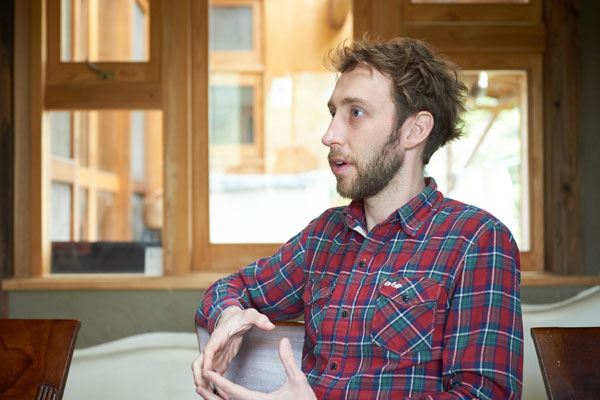
From kitchen seasonings to fermented foods
So you were more interested in home cooking and regional dishes than in the typical Japanese foods?
That’s right. When I got married, I started taking an interest in the seasonings and condiments that my wife would use, and in particular the way she could construct such an array of different flavors from the basic staples of soy sauce, miso, mirin and salt, three meals a day, day after day. And then, as I started to understand the different manufacturing methods and the subtle differences in flavor between different types of soy sauce and sake, I really began to appreciate the key concept of flavor in the context of Japanese cuisine.
One time when I was staying on a farm, they served me eggs on rice with soy sauce and a bowl of miso soup made with home-made miso paste. It was incredible! I simply could not believe that they got to enjoy such wonderful food every day. That really got me interested in fermented foods. And I noticed that I was feeling a whole lot healthier too.
These days, many people outside of Japan would be familiar with fermentation products such as sake, shoyu (soy sauce) and miso paste. I was very keen to learn about fermentation processes, and in particular the starter material known as koji. So I began to do my own research into fermented foods.
One time when I was staying on a farm, they served me eggs on rice with soy sauce and a bowl of miso soup made with home-made miso paste. It was incredible! I simply could not believe that they got to enjoy such wonderful food every day. That really got me interested in fermented foods. And I noticed that I was feeling a whole lot healthier too.
These days, many people outside of Japan would be familiar with fermentation products such as sake, shoyu (soy sauce) and miso paste. I was very keen to learn about fermentation processes, and in particular the starter material known as koji. So I began to do my own research into fermented foods.
Sake is integral to Japanese culture
So you were formally accredited as a sake master and then you began making sake yourself, is that right?
Learning how to make sake taught me a great deal about fermentation.
At Terada Honke brewery in Kozakimachi in Chiba prefecture, they showed me how the sake exists alongside microorganisms. I started visiting breweries all over Japan to see just how many different types of sake there are in the country. Before long, I was hooked!
Sake is made from rice and water. It’s a product of the farm, and it’s also an integral part of religion. It’s reflected in so many aspects of Japanese culture: the food, the festivals, even the cups and bowls. So I always say, if you want to know the real Japan, start with some sake.
At Terada Honke brewery in Kozakimachi in Chiba prefecture, they showed me how the sake exists alongside microorganisms. I started visiting breweries all over Japan to see just how many different types of sake there are in the country. Before long, I was hooked!
Sake is made from rice and water. It’s a product of the farm, and it’s also an integral part of religion. It’s reflected in so many aspects of Japanese culture: the food, the festivals, even the cups and bowls. So I always say, if you want to know the real Japan, start with some sake.
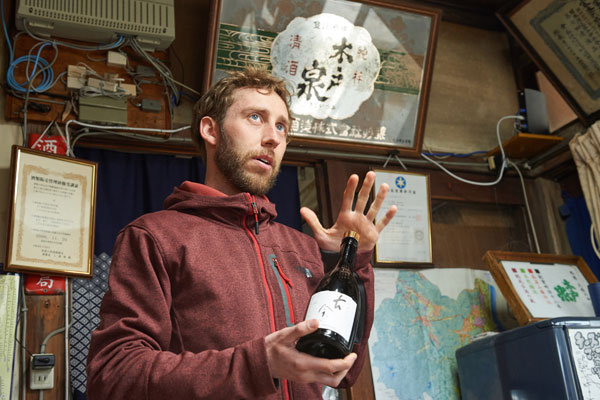
You run food culture programs all over Japan. What are some of your most memorable experiences, in terms of places you have been or things you have tried?
I’d have to say the nori seaweed at Sadosima off the coast of Niigata prefecture?it was exceptional. I was there all day with the old ladies and fishermen of the island, sitting around drinking sake and roasting up fresh nori to snack on. It was just so completely different to what we’re used to, and it made me realize what we’re missing out on!
In terms of places, I really love Mt. Aso in Kumamoto prefecture, where I went as part of a tourism project to attract overseas visitors to Japanese national parks. The view is spectacular from so high up; you can see for miles and miles and the scenery is stunning. Some local farmers provided us with sake and meat which we cooked on a barbeque around the campfire. What an amazing experience.
And although it might just be my personal preference, I’m convinced that the best food and the best sake isn’t always to be found at expensive city restaurants. Sometimes it’s the natural setting and the fresh clean air of the countryside that contribute to a great culinary experience. It’d be easy for me to organize tours and take people into the countryside, but what I really want to do is set up the local infrastructure so that international tourists can go and discover these wonderful places for themselves. I think it’s important that we open up regional attractions to both international and domestic tourists alike.
In terms of places, I really love Mt. Aso in Kumamoto prefecture, where I went as part of a tourism project to attract overseas visitors to Japanese national parks. The view is spectacular from so high up; you can see for miles and miles and the scenery is stunning. Some local farmers provided us with sake and meat which we cooked on a barbeque around the campfire. What an amazing experience.
And although it might just be my personal preference, I’m convinced that the best food and the best sake isn’t always to be found at expensive city restaurants. Sometimes it’s the natural setting and the fresh clean air of the countryside that contribute to a great culinary experience. It’d be easy for me to organize tours and take people into the countryside, but what I really want to do is set up the local infrastructure so that international tourists can go and discover these wonderful places for themselves. I think it’s important that we open up regional attractions to both international and domestic tourists alike.
Identifying the finest culinary experiences in the country
So what’s your next challenge?
In the same way that the Slow Food movement inspired by the Italian approach to meals has gained considerable traction around the world, I believe that there is an important message in Japanese cuisine about the way in which we interact with food.
The Japanese term for Japanese food is washoku; interestingly, the character for wa also means peace. In other words, the very concept of Japanese food denotes gathering together to eat in peace. By providing the food, the place, and the sense of togetherness that makes this possible, we are creating the ultimate learning space. But most tourists coming to Japan would be quite unaware of this aspect of Japanese food. So I’ve made it my personal mission to show them what it’s all about.
The Japanese term for Japanese food is washoku; interestingly, the character for wa also means peace. In other words, the very concept of Japanese food denotes gathering together to eat in peace. By providing the food, the place, and the sense of togetherness that makes this possible, we are creating the ultimate learning space. But most tourists coming to Japan would be quite unaware of this aspect of Japanese food. So I’ve made it my personal mission to show them what it’s all about.
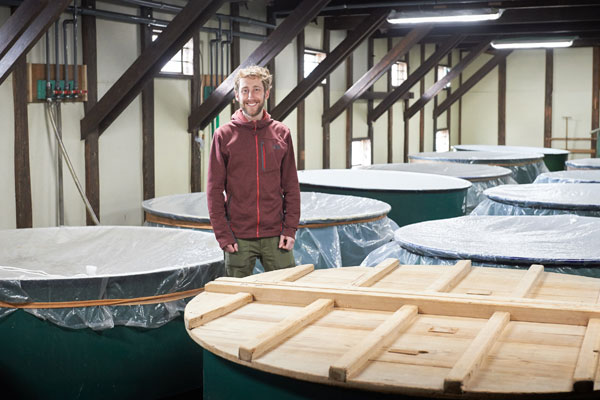
For instance, you could put together a really good day trip from Tokyo to the Kidoizumi brewery here in Isumi. Kidoizumi offers unique experiences such as observing traditional sake-making techniques and learning about how we make vintage 40-year-old sake. It’s easy to get to?just over an hour from Tokyo by train?and there’s plenty to see and do, such as the Isumi Railway, the coastline, and artisan cheese workshops. My aim is to link together the main elements?people, food, experiences and regional attractions?to build this area into a genuine destination in its own right.
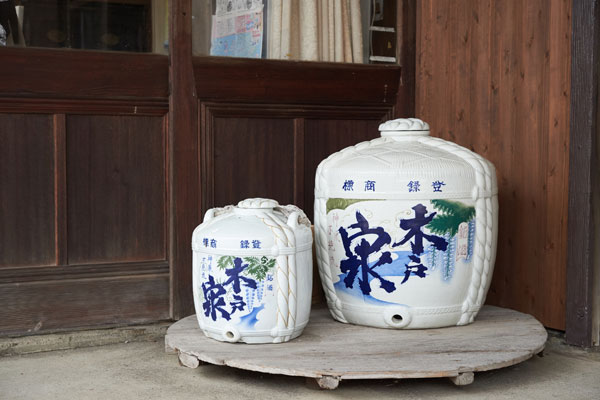
Writer : HISAYO IWABUCHI
/
Photographer : YUTA SUZUKI

